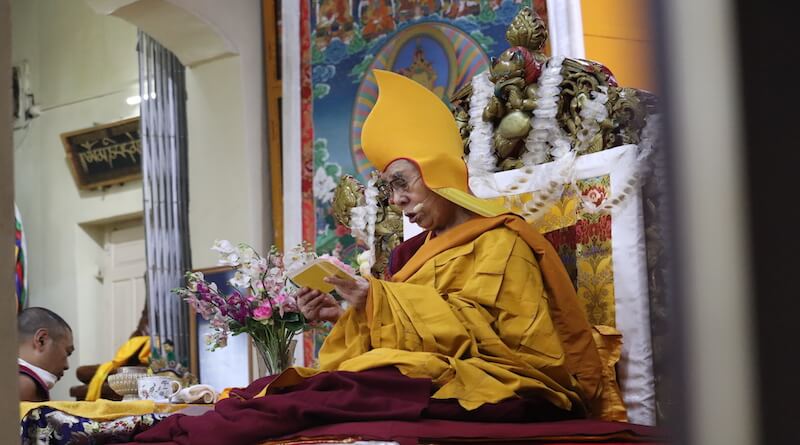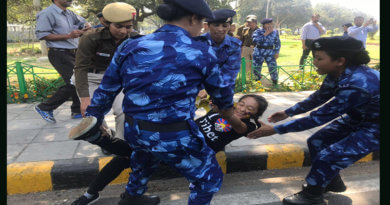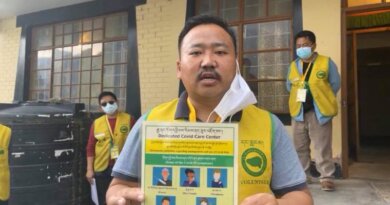Interventionism: Why China is keen on installing the next Dalai Lama
By Vijay Kranti
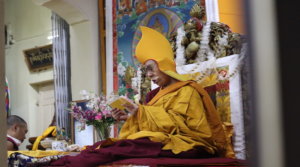
Despite the Dalai Lama’s efforts to resist Chinese interference, Beijing is trying its best to appoint a puppet successor to him.
After Chairman Mao’s People Liberation Army (PLA) conquered a major chunk of Eastern parts of Tibet in 1949-50, he had no problem in coercing the 15-year-old Dalai Lama’s theocratic government in Lhasa to sign on the dotted lines of what it called the “Seventeen Point Agreement”. This agreement celebrated the “peaceful liberation” of Tibet and its amalgamation into the “Motherland” as an “Autonomous Region” of China in 1951.
Although Mao openly professed that religion was the enemy and opium of the masses, yet this agreement promised that China would not interfere in the religious and cultural affairs of Tibet. But in their over-enthusiasm to integrate Tibet and Tibetans into the new communist China, the Communist-military bosses of Tibet started working on the premise that a Tibetan minus his faith in Buddhism will make a perfect Chinese patriot.
No surprise that direct interference in religious matters and challenging the monastic system of Tibet, which formed the basis of Tibetan social structure, led to an upheaval that culminated in the public uprising of March 1959, which ended with the killing of over 80,000 Tibetan people (as per UN documents) at the hands of the PLA and the daring escape of Dalai Lama and a 100,000 Tibetans to India.
The Chinese Communist Party’s policy of annihilation of Tibet’s religion and religious institutions continued with religious zeal until the late 1980s, when two successive Tibetan uprisings against the occupying China made the Beijing bosses sit up and take a fresh look at their religious policies on Tibet. Until then, all administrative and Party dispatches from Lhasa were oozing with reports about Tibetan masses’ thankfulness to the Party and the government for bringing “prosperity” and “liberation” from the “serfdom” of the “Dalai Clique”. They were shocked to observe that despite Dalai Lama’s absence for over three decades and enormous Marxist brainwashing of the existing three generations of Tibetans, the longing for Dalai Lama and religion was the main binding force among young Tibetan demonstrators.
It was the first time when Beijing leadership realised their failure in judging the importance of Buddha Dharma and the exiled Dalai Lama in the hearts of their colonised Tibetan subjects. A new resolve to exploit the power of religion was adopted to tame Tibet and to take on the Dalai Lama’s international influence. A major highlight of this resolve was to take charge of Tibet’s religious system, especially to bring the system of reincarnation under the CPP’s control. The first experiment in this direction was the appointment of a religious committee under a senior Communist leader for searching the new incarnation of Rangjung Rigpe Dorje, the previous (16th) Karma Pa, who was a senior and internationally popular incarnate lama who had died in exile in 1981.
Shunning away their anti-religion practices, the newly discovered boy Orgyen Thinley Dorje was enthroned in Karma Pa’s traditional monastery in Tsurphu in Tibet. The ceremony was televised live on China’s national TV amidst a large gathering of followers of the deceased 16th Karma Pa who were especially flown in from Europe. This process was repeated for the enthronement of the 11th Panchen Lama in 1995. The 10th Panchen Lama had lived as an ally of Beijing for three decades before he died under suspicious circumstances a day after a public meeting in Tibet in 1989, which witnessed his sudden outburst against Chairman Mao and Chinese control over Tibet.
For Beijing government, these two events were like full dress rehearsals for the day when exiled Dalai Lama dies and it’s time to replace him with its own puppet reincarnation. It’s a different matter that the Karma Pa suddenly escaped to India on the eve of the new millennium in December 1999. To make it worse for Beijing leaders, the Chinese-appointed Panchen Lama has never been acceptable to the Tibetan people following the arrest and disappearance of the 6-year-old Gedhun Choeky Nyima, whom Dalai Lama had recognised as the real incarnation of the previous Panchen Lama. Despite an unending international campaign going on since 1995, Beijing has yet to disclose the whereabouts of the boy and his parents.
The Beijing government’s revised policy on Tibetan religion took a formal shape at the Third Tibet Work Forum, the highest strategy conclave of the CPP and the government which was held from July 20-23 in 1994 in Beijing. The Work Forum resolved to “cut the serpent’s head”, a euphemism for controlling Dalai Lama’s influence in Tibet; to increase punishment for public expression of anti-China and pro-Dalai Lama demonstrators; and to take official control of religious institutions and practices.
In line with this strategy, Beijing’s assertions about its monopoly over the selection of all Tibetan incarnate lamas, especially the Dalai Lama, have become more frequent and high-decibel over the years. The most significant event in this chain came on 3 August 2007, when China’s State Administration for Religious Affairs issued its “State Religious Affairs Bureau Order No. 5” as a statutory decree which made it compulsory for each new reincarnate lama to seek formal certification of the validity of his rebirth from four arms of the government, all controlled by the CPP directly or indirectly. This practically means that no reincarnation can take birth without approval of the Communist Party. Otherwise he, or for that matter, any future Dalai Lama will be declared “illegal and invalid” if his incarnation selection process is not certified by the CPP.
This Chinese stand is in sharp contrast to the Tibetan tradition of reincarnation, which is based on the premise that each enlightened soul, which include the Dalai Lama, Panchen Lama and all Tulkus (“Living Buddhas” in Chinese terminology), are capable of deciding the time, place and family for their next birth as a new baby. While Dalai Lama is the supreme among them and is the titular as well as the spiritual head of Tibet, all other Tulkus hold only spiritual powers. Each reincarnate baby is searched and identified through a specific set of rituals by other monks following the death of a Tulku. Tenzin Gyatso, the Present (14th) Dalai Lama was found and identified in the Taktser village of Eastern Tibetan province of Amdo, now renamed by China as Qinghai in 1939 in a similar way.
The latest Chinese official assertion on Dalai Lama’s reincarnation came on 19 March this year, when Geng Shuang, the spokesperson of China’s Minister of Foreign Affairs, condemned the Tibetan claims by saying that selection of the next Dalai Lama is China’s exclusive prerogative as part of its “policy of freedom of religious belief”. In a press briefing he declared that “reincarnation of living Buddhas including the Dalai Lama, must comply with Chinese laws and regulations and follow religious rituals and historical conventions of China”.
Sensing China’s designs about the appointment of his successor, the Dalai Lama took a historic step in 2011 when he officially separated the spiritual and political powers of the institution of Dalai Lama and handed over his political powers to a “Sikyong” (President) and the Parliament, to be elected through universal and confidential franchise among the Tibetan community every five years. On the one hand this master stroke of Dalai Lama has pre-empted Chinese plans of installing a puppet baby as the next titular head of colonised Tibet, and on the other hand gave an infinite shelf-life to the Dalai Lama as a political institution free from Chinese intervention. No surprise, Beijing has rejected it and is asserting its authority over the selection and installation of the next Dalai Lama when the present one passes away.
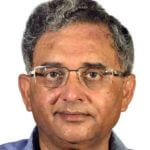
Vijay Kranti is a senior Indian journalist and Tibetologist.
He can be contacted at v.kranti@gmail.com and www.vijaykranti.com
The views expressed in this article are that of the author’s and should not be attributed to Tibet Express.

